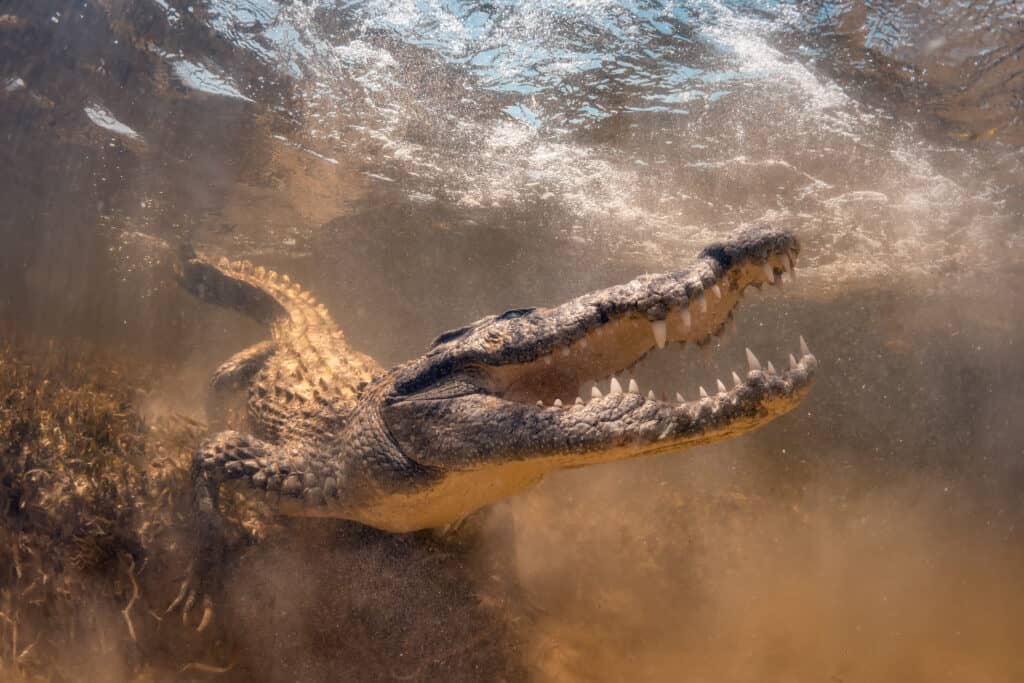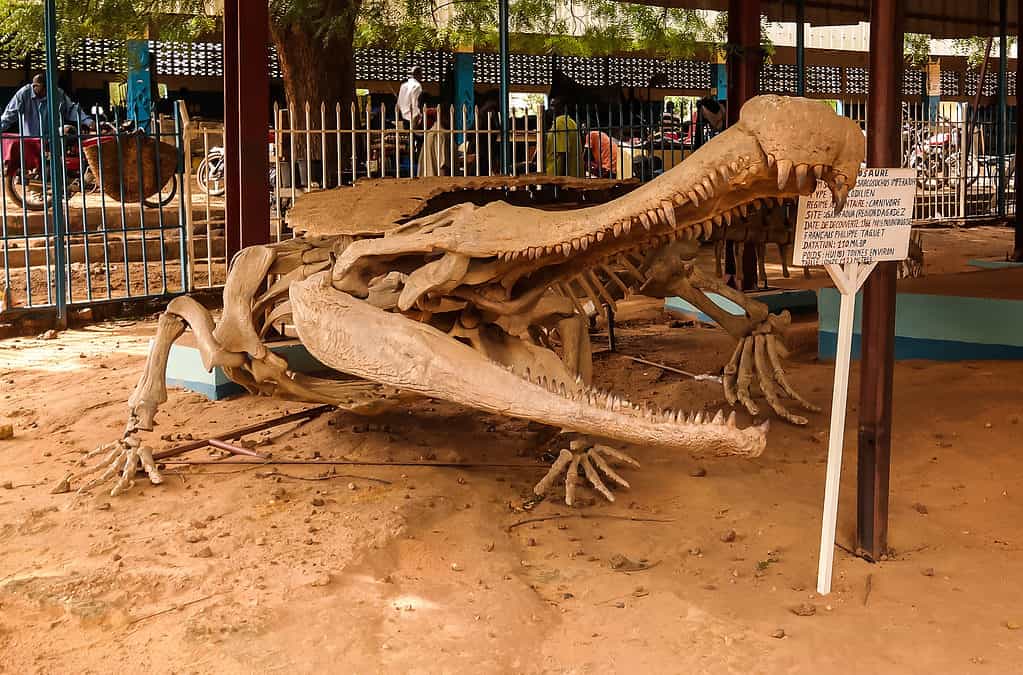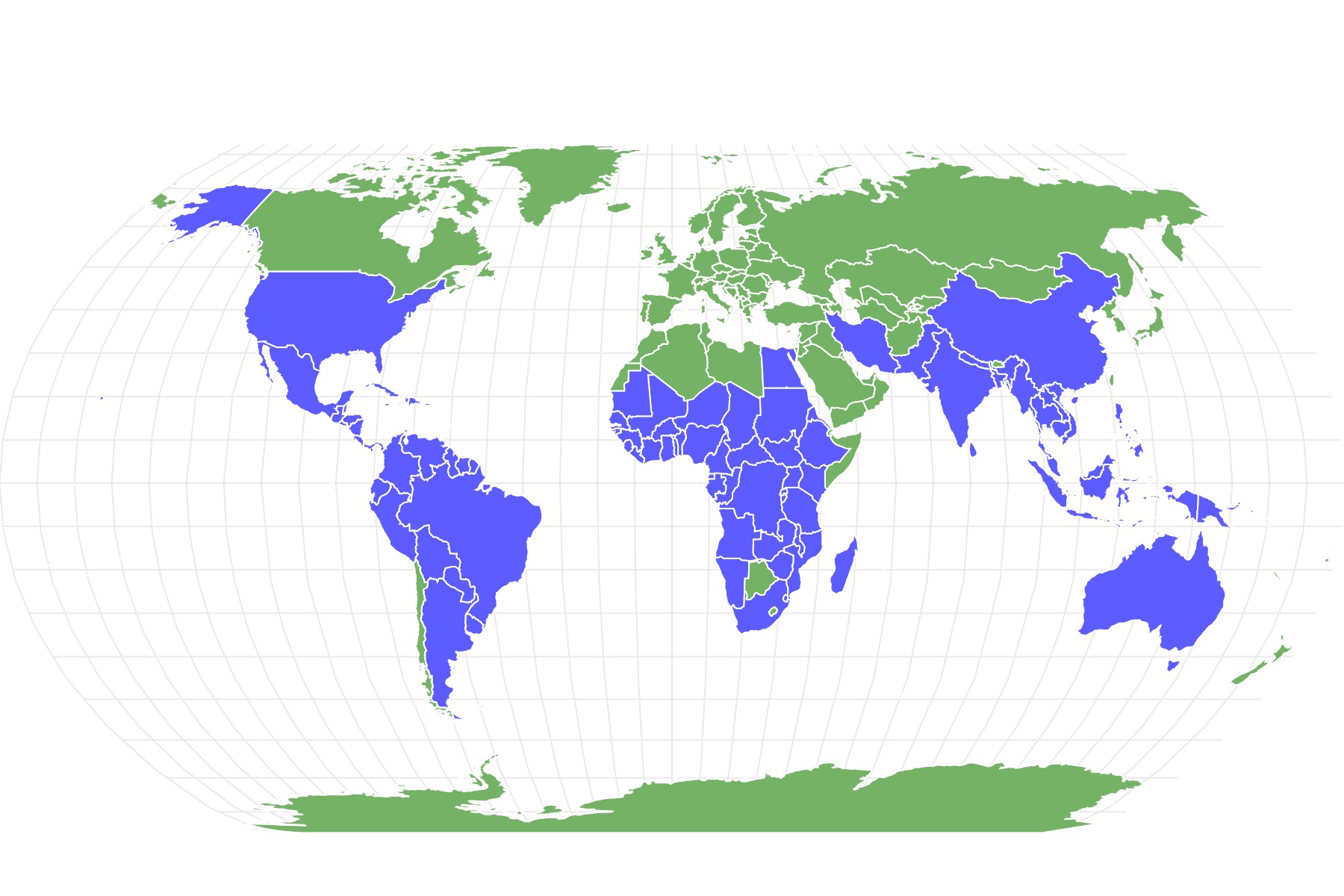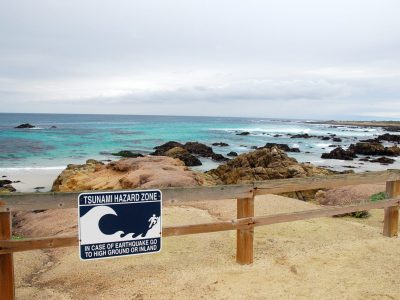Crocodylomorph
Crocodylus porosus
Crocodylomorphs include extinct ancient species as well as 26 living species today.
Advertisement
Crocodylomorph Scientific Classification
- Kingdom
- Animalia
- Phylum
- Chordata
- Class
- Reptilia
- Order
- Crocodilia
- Family
- Crocodylidae
- Genus
- Crocodylus
- Scientific Name
- Crocodylus porosus
Read our Complete Guide to Classification of Animals.
Crocodylomorph Conservation Status
Crocodylomorph Facts
- Prey
- Fish, birds, turtles, snakes, mammals
- Main Prey
- Fish
- Group Behavior
- Solitary
- Group
- Fun Fact
- Crocodylomorphs include extinct ancient species as well as 26 living species today.
- Estimated Population Size
- 6 million
- Biggest Threat
- Hunting, loss of habitat
- Most Distinctive Feature
- Armor-like scales
- Distinctive Feature
- Powerful jaws, teeth.
- Habitat
- Tropical
- Predators
- Lions, tigers, leopards, pythons, anacondas
- Diet
- Carnivore
- Number Of Species
- 26
Crocodylomorph Physical Characteristics
- Color
- Dark Brown
- Dark Grey
- Dull Olive
- Black-Brown
- Skin Type
- Scales
- Venomous
- No
- Aggression
- High
View all of the Crocodylomorph images!
“Crocodylomorphs include extinct ancient species as well as 26 living species today.”
Crocodylomorph Facts
- Crocodylomorphs such as crocodiles and alligators live in tropical areas of 5 continents today.
- They first evolved around 200 million years ago and survived extinction events to the present day.
- The largest living species is the Saltwater crocodile, with a record-breaking example that grew to 23 feet long and 2,600 pounds.
- Many animals feed on young crocodylomorphs. Large ones are hunted by humans, big cats, and giant snake species.
- Some crocodylomorphs are extinct, others are in various stages of endangerment, while others are of “Least Concern” for extinction.
Crocodylomorph Scientific Name
The name “crocodylomorph” is derived from Greek. The word kroko means “pebble” and delios means worm. Putting them together, Greeks referred to crocodiles as “pebble worms” because of the rock-like appearance of their skin. “Morph” is a suffix also derived from Greek, meaning “shape.” In zoological classification, this suffix is added to names of animals at the level of infraorder or higher. Modern crocodiles and alligators are categorized as being in the Reptilia class and Crocodilia order.
Description & Size

Today, the largest crocodylmorph is the saltwater crocodile, that can grow to nearly 23 feet and weigh over 2,600 pounds.
©Alexander Machulskiy/Shutterstock.com
“Crocodylomorph” is a term for an animal group that includes not only ancient extinct species but 26 living species of crocodiles, alligators, and similar animals. Today, the largest species is the saltwater crocodile, that can grow to nearly 23 feet and weigh over 2,600 pounds. The largest prehistoric species discovered was Sarcosuchus imperator, that measured 40 feet long and weight 17,600 pounds.
Some of the earliest species walked on two legs and were herbivores. All surviving modern species are quadrupedal carnivores. They are generally solitary except during mating season when they gather in groups. Reproduction is by laying eggs. They are generally cannibalistic, with babies being particularly vulnerable to being eaten by unrelated adults.
Crocodylomorph Evolution and History
Crocodylomorphs are less diverse today than they were in ancient times. Early crocodylomorphs, called sphenosuchians, were small, lightweight, fast-moving land animals that walked upright. Many of these were less than 4 feet long. Some researchers describe them as having slender builds like greyhounds.
In the Jurassic period, they evolved into a variety of forms and moved into new habitats, including swamps, rivers, and the ocean. Some of these grew to be 26 feet or more in length. For example, Metriorhynchus had a tail like a fish and paddle-like forelimbs.
By the Cretaceous period, some crocodylomorphs were herbivorous, such as Simosuchus clarki and Chimaerasuchus paradoxus. Others were vicious carnivorous predators.
About 95 million years ago in the late Cretaceous, the crocodilians appeared. Along with birds, these are the only members of the Archosauria group to survive the mass extinction event that killed most of the dinosaurs 65 million years ago. Crocodilians today include crocodiles, alligators, caimans, and the gharial.

There is abundant fossil evidence for this ancient and populous group of creatures. Crocodylomorph fossils have been discovered on every continent except Antarctica.
©iStock.com/Homo Cosmicos
Diet -What did Crocodylomorph Eat?
Some early crocodylomorphs were herbivores, but the vast majority were carnivores, including those that have survived to the modern day. What they ate depended on their size. Babies and smaller adult species ate fish, insects, eggs, and smaller animals, including those of their own species. Large ancient species ate dinosaurs, sea turtles, large fish, and any other animals on land or sea they could catch.
Similarly, modern crocodylomorphs such as crocodiles, alligators, and caimans feed on fish, birds, turtles, snakes, mammals, and any other creature that wanders too close to the water. They have also been known to eat pets and even human beings.
Habitat – When and Where It Lived
The first crocodylomorphs evolved around 200 million years ago in the Late Triassic and Early Jurassic periods. Fossil discoveries are on every continent. This includes many thousands in Europe where no living crocodylomorphs exist in the wild anymore.
Today about 26 species with over 6 million individuals are still alive today in tropical regions of the world. The largest populations of living crocodylomorphs are found in the southern United States, Latin America, Sub-Saharan Africa, India, Southeast Asia, Indonesia, and Australia.
Threats And Predators
Crocodylomorphs can be prey for any carnivores larger than themselves, including dinosaurs and sharks in ancient times and big cats such as lions, tigers, and jaguars or giant snakes such as pythons or anacondas today. They are also cannibalistic, eating others of their own species at times. Any meat-eating species may feed on their eggs and babies.
Historically, the greatest threat to crocodylomorphs has been mass extinction events, including asteroid impacts and climate change. However, they have been so adept at filling so many different environmental niches on land and sea that they have outlived the dinosaurs and continue to thrive today in tropical climates worldwide.
The greatest threats to them today come from loss of habitat, such as draining swamps and deforestation to expand human agriculture and settlement, and from hunting. Humans use them for food and tan their hides for high-end luxury goods such as shoes, belts, and handbags. Some species of crocodylomorphs are near extinction today, while others are at various levels of threat of extinction. Still others are plentiful. The American alligator, for example, was endangered until a conservation program implemented in the 1960’s allowed them to begin multiplying again. Its conservation status is now “Least Concern.” In the Everglades of Florida, expanding populations of escaped reticulated pythons are vying with alligators for the status of apex predator.
Discoveries and Fossils – Where It was Found
There is abundant fossil evidence for this ancient and populous group of creatures. Crocodylomorph fossils have been discovered on every continent except Antarctica. Specific countries where they have been found include Argentina, Australia, Bangladesh, Belgium, Bengal, Brazil, Bolivia, Canada, Egypt, France, Germany, India, Libya, Madagascar, Mali, Morocco, Myanmar, Niger, Nigeria, Pakistan, Peru, Saudi Arabia, Scotland, Seychelles, South Africa, Spain, Sudan, Switzerland, Tanzania, Thailand, Uganda, UK and the USA.
The Natural History Museum of London maintains a large collection of over 5,000 specimens gathered from all over the world. Many of these are individual bones but others are complete skeletons that reveal a great deal of detail about the living animal.
Extinction – When Did It Die Out?
Crocodylomorphs never completely died out, as there are some 26 species still alive today. However, there were many prehistoric species that went extinct throughout history. Crocodylomorphs survived major dinosaur extinction events at the end of the Triassic and Cretaceous periods. Birds, thought to be descendants from dinosaurs, are another branch of the evolutionary tree that survived with them to modern times.
Similar Animals to the Crocodylomorph
Similar animals to the crocodylomorph include:
- Batrachopus grandis – an extinct crocodylomorph ancestor approximately 3 feet long that walked on two legs. No fossils exist; we know of it fossil trackways of over footprints in South Korea.
- Komodo dragon – a member of the monitor lizard family indigenous to several islands in Indonesia. It grows up to 10 feet long and weighs up to 150 pounds.
- Iguana – This herbivorous lizard species lives in Mexico, Central America, and the Caribbean. They can grow up to 6 feet long and make popular pets.
Related Animals
View all 235 animals that start with CCrocodylomorph FAQs (Frequently Asked Questions)
Are crocodylomorphs carnivores, herbivores, or omnivores?
Crocodylomorphs are a carnivorous species. Ancient species fed on large marine creatures. Modern ones feed on fish, birds, turtles, snakes, mammals, and any other creature that wanders too close to the water.
When were the crocodylomorphs alive?
The first crocodylomorphs evolved around 200 million years ago in the Late Triassic and Early Jurassic periods. They have never gone completely extinct; 26 species with over 6 million individuals are still alive today in tropical regions of the world.
How big are crocodylomorphs?
“Crocodylomorph” is a term for an animal group that includes not only extinct ancient species but 26 living species of crocodiles, alligators, and similar animals. Today, the largest species is the saltwater crocodile, that can grow to nearly 23 feet and weigh over 2,600 pounds. The largest prehistoric species discovered was Sarcosuchus imperator, that measured 40 feet long and weight 17,600 pounds.
Thank you for reading! Have some feedback for us? Contact the AZ Animals editorial team.
Sources
- UCMP Berkeley, Available here: https://ucmp.berkeley.edu/taxa/verts/archosaurs/crocodylomorpha.php
- Wikipedia, Available here: https://en.wikipedia.org/wiki/Crocodylomorpha
- Wiktionary.org, Available here: https://en.wiktionary.org/wiki/-morpha

















